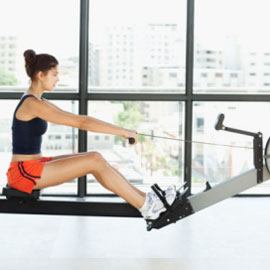 Developing a more active lifestyle after surgery for weight loss often involves trying new things. As you adjust to your healthier life and shrinking waistline after LAP-BAND, you may encounter many new opportunities that will help you find a fitter future. With so many different activities for exercise available, there’s no reason to devote all of your exercise time to one workout. Switching things up can keep you from losing interest and avoid the boredom that can often come from focusing on a single exercise routine.
Developing a more active lifestyle after surgery for weight loss often involves trying new things. As you adjust to your healthier life and shrinking waistline after LAP-BAND, you may encounter many new opportunities that will help you find a fitter future. With so many different activities for exercise available, there’s no reason to devote all of your exercise time to one workout. Switching things up can keep you from losing interest and avoid the boredom that can often come from focusing on a single exercise routine.
One activity you may have never given a second thought to is rowing. Rowing as a sport has its origins in 17th century England, where the purveyors of river taxies and ferries on the Thames first began to race one another. The sport became so popular that many people began to gamble on its races, or regattas, and it is universally recognized as the first sport to declare a world champion. Its first inclusion in the Olympics came at the 1900 Paris games, one of the first Olympics of modern times.
Despite this storied history, rowing is relatively uncommon in the U.S, viewed by many as a niche sport. This could be because it necessitates expensive equipment and a body of water. Yet, rowing has many big benefits as a physical activity and you don’t have to get anywhere near the water or a rowing team to experience them.
Introducing…The Rowing Machine
Since as early as 1876, rowers have been using indoor machines to improve their athletic performance. The original rowing machines were made of clunky, heavy metals and hydraulics, but today’s machines typically feature highly streamlined designs. There are many benefits to rowing machines, which can be found at many gyms across the country or purchased for a convenient at-home workout.
- Completely adjustable. Modern rowing machines feature adjustable levels of resistance, making them malleable to any age or level of stamina. This makes rowing perfect for those who are just starting to build up their strength as they become more active after weight loss surgery.
- Low impact. Rowing significantly reduces the stress on joints and ligaments that some other aerobic activities like running can cause. A comfortable, low-to-the-ground bucket seat provides you with a natural sitting position as you exercise, helping you sit up instead of hunching over. This means that you don’t put as much impact on your shoulders and neck as you can when positioned on a bicycle.
- Burns calories. Excellent for any exerciser focused on weight loss, a moderate rowing workout can help you burn more than 300 calories in a half hour session.
- Tones all muscles evenly. Rowing requires the use of all of your body’s muscles and is capable of training them evenly. Each stroke works the legs, hips, buttocks, back, shoulders, arms, trunk and core, helping you tone every muscle at once.
If you don’t have a gym membership or your gym doesn’t have a rowing machine, there are many models available that will help you get a great aerobic workout in the comfort of your own home. Many models are available for $200 or less and some can be folded and easily stored under your bed or in a closet. Like having an exercise bike, a rowing machine gives you a great way to exercise regardless of weather, and you can even get a workout in while watching your favorite TV show.
Offering flexible, full-body fitness, there are few better workout tools after weight loss surgery than a rowing machine. Once Dr. Bagnato clears you for exercise and you’ve recovered from surgery give one a shot—you may be surprised by how much you like it.
Leave a Reply